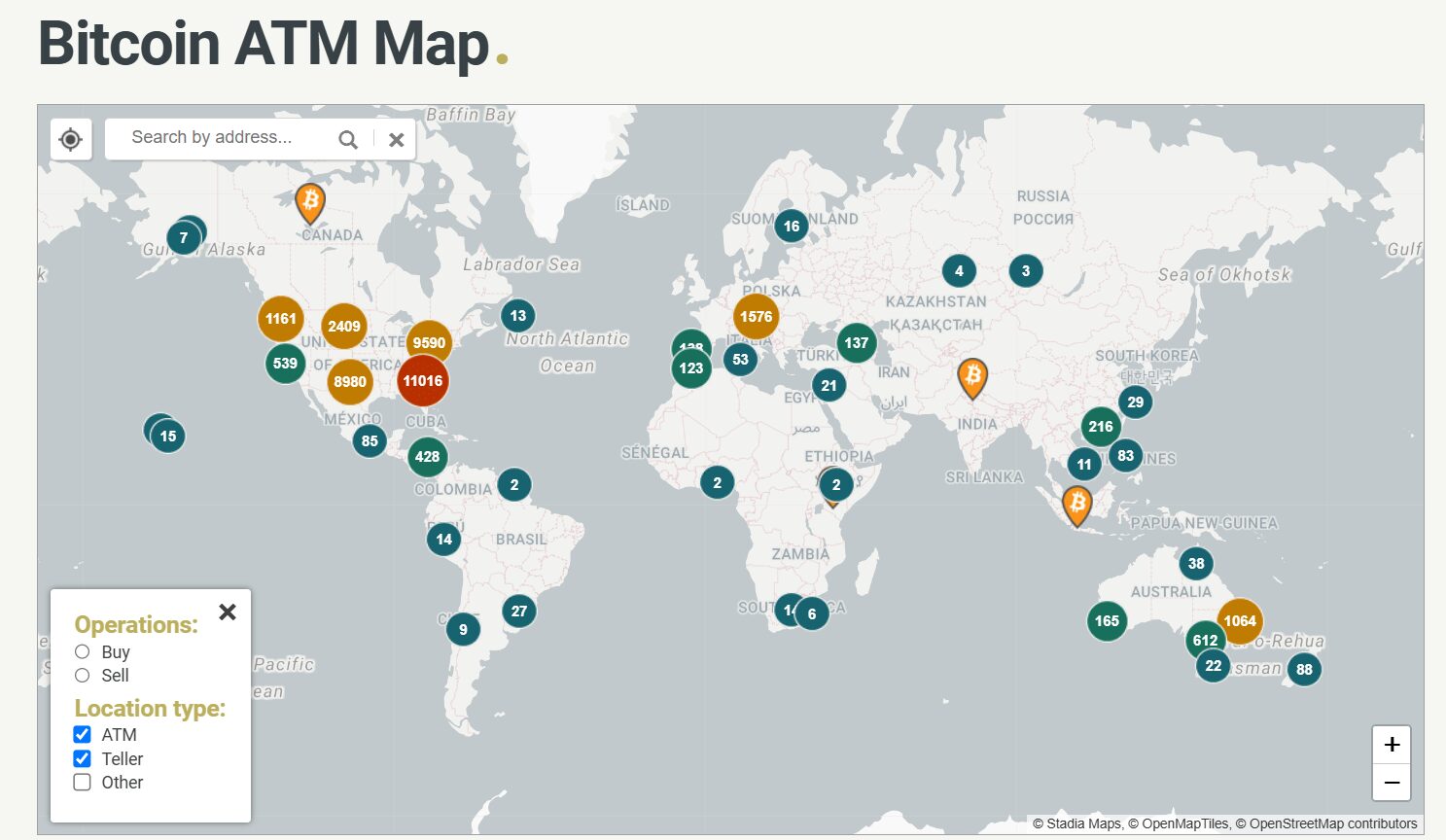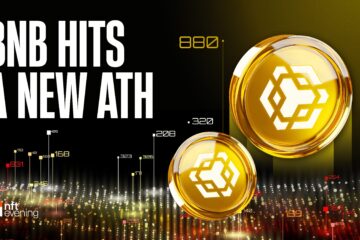As the value of cryptocurrencies rises and trust in them grows, Bitcoin ATMs have become a significant link between the world of digital assets and traditional fiat money transactions. If you’re a new user or investor asking yourself what a Bitcoin ATM is, how to use a Bitcoin ATM, or how it differs from traditional ATMs, we have you covered.
This guide will explain how Bitcoin ATMs work, how to use them to buy and sell Bitcoin, their fees, and whether using one is a good crypto investment strategy.
What Is a Bitcoin ATM (BTM)?
A Bitcoin ATM, also known as a Bitcoin Teller Machine (BTM), is a physical electronic kiosk that allows you to conduct crypto-based transactions, especially using Bitcoin. Unlike traditional ATMs that connect to your bank account, a Bitcoin automated teller machine is directly connected to online cryptocurrency exchanges through blockchain technology. There are two categories of these BTM physical kiosks, namely:
- One-way (Unidirectional) ATMs – users can only buy Bitcoin.
- Two-way (Bi-directional) ATMs: Users can buy or sell Bitcoin.


Source: Bitcoinist
To use them efficiently, you need to understand their functionality:
- They’re primarily located in public spaces like airports, convenience stores, or shopping malls.
- You must have a cryptocurrency wallet to receive the BTC you buy.
- Some BTMs allow users to sell Bitcoin for fiat currency.
- Transactions are executed in a matter of minutes.
- Transaction fees can vary significantly based on the amounts.
Benefits of Bitcoin ATMs
One of the main benefits of BTMs is that they allow users to bypass traditional banking systems and use cash or debit bank cards to execute seamless cryptocurrency transactions, such as depositing cash or buying Bitcoin and other digital assets. If you’re asking yourself are Bitcoin ATMs anonymous, the answer is they offer a level of anonymity since you don’t have to provide personal information every time you transact. Other benefits include:
- Fast transactions compared to traditional cryptocurrency exchanges
- They’re accessible even to unbanked people.
- Users can transact in fiat currency if they prefer that.
- The Bitcoin teller machine displays real-time exchange rates for transparency.
Risks and Limitations of Bitcoin ATMs
With all the benefits associated with Bitcoin ATMs, there are a few downsides you need to be aware of. One of the most significant challenges is the fact that most of the ATMs don’t support every type of cryptocurrency, thereby limiting the options you may have. Other limitations include:
- Relatively high transaction fees.
- ATMs are only available in a few countries and urban areas and are almost nonexistent in rural areas.
- Some BTMs don’t support other cryptocurrencies.
- Technical issues could arise and affect transaction execution.
- Daily withdrawal limits could restrict the size of transactions.
A brief history of Bitcoin ATMs
The first Bitcoin teller machine was mounted in a coffee shop in Vancouver, Canada, on October 29, 2013, and soon after that, Bitcoin ATMs spread throughout North America and Europe. The BTM demonstrated to the world that it was possible to easily and conveniently convert BTC to cash and back again and opened the way to making cryptocurrencies public.
While the initial adopters were mostly tech-savvy individuals and crypto enthusiasts, the machines are now a part of ordinary people’s everyday financial lives. There has recently been a global expansion of Bitcoin ATM installations, with machines now available in over 70 countries. Most BTMs are available in the USA, followed by Canada and Europe. By the time of writing, there were at least 38,000 Bitcoin ATMs globally, according to Statista.
How Do Bitcoin ATMs Work?
If you’re trying to figure out how to use a Bitcoin ATM, you may be surprised by its straightforward operations despite using advanced technologies to facilitate transactions. Once you insert physical cash, the machine will convert it into BTC and send it to your digital wallet. You can compare the BTM to a vending crypto machine acting as a bridge between Bitcoin and cash.
How to use Bitcoin ATM
Using a Bitcoin automated teller machine is a straightforward experience as long as you follow the simple prompts given by the machine. The most crucial factor is to ensure you have a crypto wallet installed on your mobile device, as this is where your purchased Bitcoin will be sent. The following are the steps to follow:
- Digital Wallet: Ensure you have a crypto wallet to store your Bitcoin once you complete the transaction at the ATM.
- QR Code: Scan the QR Code from your Bitcoin wallet app to connect it to the financial transaction.
- Transaction: Insert cash into the BTM and choose the amount of BTC you want to buy or sell. If you intend to sell Bitcoin, enter the amount you’re selling (Ensure you locate a two-way Bitcoin ATM to be able to sell crypto for traditional currency.)
- Blockchain: The ATM processes the transaction on the blockchain.
- Receive Bitcoin/Cash: The crypto you bought is sent to your digital wallet, or you receive traditional currency if you sell Bitcoin. You could receive an email confirmation for the transaction.
Bitcoin ATM Regulatory Requirements
As the proliferation of Bitcoin ATMs continues worldwide, it’s good to note that there are different regulations for using them depending on the jurisdiction. Governments everywhere want to guarantee users’ safety and have established rules promoting Bitcoin adoption and consumer safety. While it may be challenging to develop strict cybersecurity measures, most countries have established anti-money laundering (AML) and know-your-customer (KYC) laws regarding their installation and use.
Before using a Bitcoin teller machine, you need to understand the relevant regulations, so you use only those operators that promote safety in addition to innovation. Moreover, different countries and states may have different rules for operating Bitcoin ATMs. Learn the applicable regulations so you can adhere to them before you use them. You are better off using the cryptocurrency legality map to know where you will likely find an ATM.
Bitcoin ATM Fees
Compared to traditional ATMs or even buying or selling cryptocurrencies online, Bitcoin ATMs could be relatively expensive. The typical transaction fees are between 4% and 25% per transaction, depending on the number of machines involved. Some BTMs may charge an extra fee, known as network or variable miner fees, to process your transaction on the blockchain. If you’re trying to buy a large amount of crypto, compare the fees with a cryptocurrency exchange and see if you could save some.
How to Find a Bitcoin ATM by Locations
Once you’ve learned how Bitcoin ATMs work, your next task could be finding a Bitcoin teller machine near you. The best resource in this regard is a website like Coin ATM Radar, which enables you to locate a nearby Bitcoin ATM based on your location. The website provides most details, including the cryptocurrencies supported and the transaction types you can execute.


Source: Coin ATM Radar
Here is the simple steps to find a Bitcoin ATM near you:
- Visit Website: Login to Coin ATM Radar and enter your city or address.
- Filter your search: You can filter your search results by digital asset type, such as Bitcoin, USDT, etc., whether you’re buying or selling, and the preferred ATM provider.
- Locate the ATM: Review the provided map to find a BTM nearest to your location.
Bitcoin ATM Scams
Criminals are increasingly using Bitcoin ATMs to trick unsuspecting individuals into using BTMs to transfer funds to them by pretending to be running genuine investments. Cybercriminals especially target senior citizens via emails, phone calls, or social media to convince users to deposit money into Bitcoin ATMs. The criminals mostly instruct victims to scan a wallet’s QR code or enter their wallet address, directing them to the attacker’s account.
Examples of Bitcoin ATM scams include:
- Impersonation: Attackers pretend to be law enforcement officers, government officials, or utility company staff and demand payment in cryptocurrency.
- Bogus Investment Opportunities: Scammers lure unsuspecting users with nonexistent investment opportunities promising high returns, asking victims to deposit funds through Bitcoin ATMs.
How to Avoid Bitcoin ATM Scams
- Be cautious with unsolicited offers: Never trust any offer from a stranger promising investment opportunities and quick riches.
- Verify legitimacy: Don’t proceed with any transaction you doubt; never send money to wallet addresses and QR codes from unfamiliar sources.
- Avoid urgency: Never allow anyone to pressure you with false claims of limited-time offers.
- Report suspicious activity: Report any suspicious activity to law enforcement.
The Bottom Line
Using a Bitcoin teller machine is a user-friendly way to execute crypto-based transactions. By understanding how Bitcoin ATMs work, you can easily, confidently, and conveniently buy, sell, and send BTC. Note that you could learn how to use Bitcoin ATMs with more advanced features as time progresses. Whether you’re a novice or an experienced crypto user, using the resources in this guide will help you make the best automated Bitcoin teller machine.
FAQs
Can I get cash from a Bitcoin ATM?
Bitcoin ATMs provide a modernized way of interacting with cryptocurrencies so that they are accessible in the most practical way. Since they function just like regular ATMs but are designed for crypto transactions, you can convert your Bitcoin holdings and withdraw them in cash in just a few minutes.
How much does a Bitcoin ATM charge for $500?
Bitcoin ATMs charge between 5% and 25% per transaction and a network of between $1 and $3. If you do a transaction of $500, it could cost you between $40 and $100 depending on factors like location, time, and the Bitcoin ATM operators.
How much does a Bitcoin ATM charge per $1000?
According to Bitcoin Vault, a Bitcoin transaction of $1,000 will cost you roughly $80 to $200 in fees. However, ATMs may charge lower fees, potentially as low as 4% to 20%.
Can I send $10,000 through a Bitcoin ATM?
Yes, sending $10,000 or even higher via a BTM is possible, but in most cases, you’ll need to provide identity verification for any large transactions. Depending on the ATM provider, this could be a government-issued ID or any other personal information that specific ATM providers may require.
Are Bitcoin ATMs safe?
Bitcoin BTMs are safe to use because they employ encryption and other forms of identity verification to facilitate transactions. However, care must be taken because of the prevalence of fraudsters who trick users with deceptive tricks, such as investment scams and romance scams.
 Bitcoin
Bitcoin  Ethereum
Ethereum  Tether
Tether  XRP
XRP  USDC
USDC  TRON
TRON  Lido Staked Ether
Lido Staked Ether  Dogecoin
Dogecoin  Figure Heloc
Figure Heloc  Cardano
Cardano  Bitcoin Cash
Bitcoin Cash  WhiteBIT Coin
WhiteBIT Coin  Wrapped stETH
Wrapped stETH  Wrapped Bitcoin
Wrapped Bitcoin  USDS
USDS  Wrapped eETH
Wrapped eETH  Binance Bridged USDT (BNB Smart Chain)
Binance Bridged USDT (BNB Smart Chain)  Chainlink
Chainlink  Zcash
Zcash  Monero
Monero  LEO Token
LEO Token  WETH
WETH  Stellar
Stellar  Coinbase Wrapped BTC
Coinbase Wrapped BTC  Ethena USDe
Ethena USDe  Hyperliquid
Hyperliquid  Litecoin
Litecoin  Avalanche
Avalanche  Sui
Sui  Hedera
Hedera  sUSDS
sUSDS  Shiba Inu
Shiba Inu  Dai
Dai  USDT0
USDT0  Canton
Canton  Toncoin
Toncoin  World Liberty Financial
World Liberty Financial  PayPal USD
PayPal USD  Uniswap
Uniswap  Cronos
Cronos  Ethena Staked USDe
Ethena Staked USDe  Mantle
Mantle  USD1
USD1  Polkadot
Polkadot  Rain
Rain  MemeCore
MemeCore  Bitget Token
Bitget Token  Aave
Aave 


